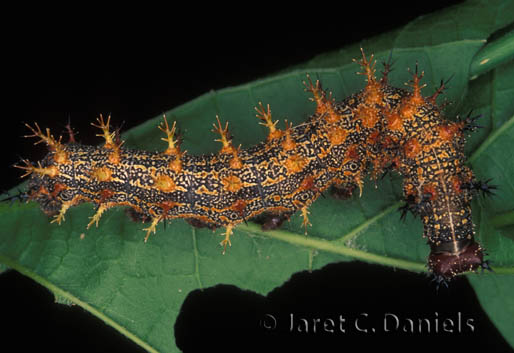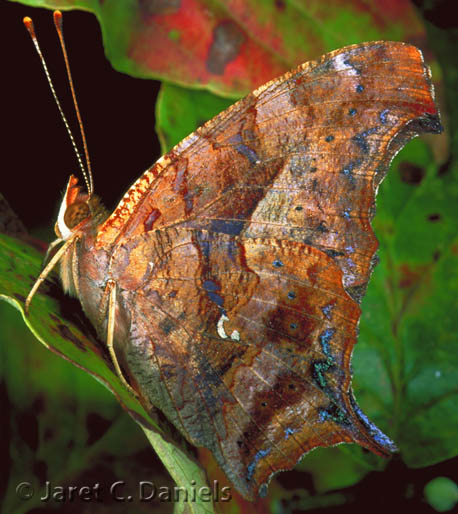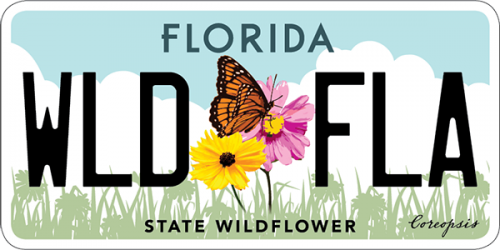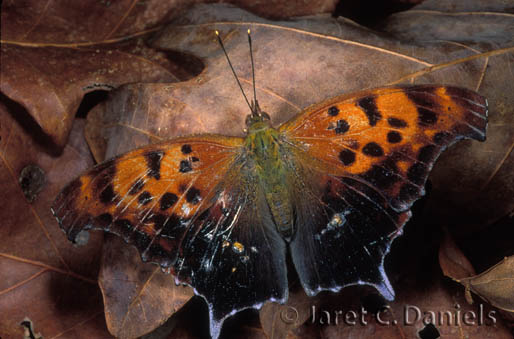- Family name: Nymphalidae/Brush-Footed Butterflies
- General description: Orange with black spots and short hindwing tail; hindwing primarily black in summer-form individuals; wing margins irregular; ventral wing surfaces mottled brown and leaf-like; ventral hindwing with white question mark in center.
- Field Marks: Orange with black spots and irregular wing margins; hindwing with short tail.
- Sexes: Appear similar

- Wingspan: 59-75 mm
- Life Cycle: Egg: Small, green, laid singly or stacked on top of each other on host leaves Mature larva: Black with cream to orange stripes and spots, and numerous yellow to orange branched spines Chrysalis: Brown with silver dorsal spots
- Number of Generations: Two generations
- Flight Season: All year

- Abundance: Common
- Habitat: Forest margins, woodland openings, swamps, wooded yards, parks
- Larval Host Plants: Winged elm (Ulmus alata), Sugarberry (Celtis laevigata), Common Hackberry (Celtis occidentalis)
- Similar Species: No similar species
- Additional Information: Adults attracted to fermenting fruit, dung, and sap flows; adults overwinter. Limited range in Arizona.
- Range in Florida
 The Florida Wildflowers & Butterflies projects at the Florida Museum are sponsored in part by the State of Florida and the Florida Wildflower Foundation, Inc.
The Florida Wildflowers & Butterflies projects at the Florida Museum are sponsored in part by the State of Florida and the Florida Wildflower Foundation, Inc.
